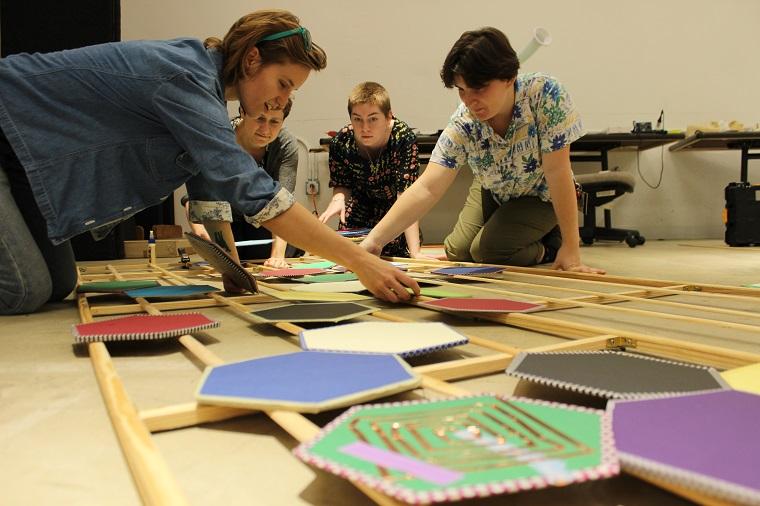What I Didn’t Say: A Collaborative, Interdisciplinary Sound Art Installation
October 12, 2018
Phoebe Pan ’20

As the power of representation has been increasingly noted in media in this modern digital age, technology and art serve as crucial mediums for marginalized voices to be heard and acknowledged.
What I Didn’t Say is an upcoming sound art installation designed by Technical Director and Lecturer in TIMARA Abby Aresty and supported by students, staff, and faculty of the program at Oberlin. The installation is a collaborative piece that explores the various experiences of women and non-binary individuals working in male-dominated STEAM fields. TIMARA is Oberlin Conservatory’s Technology in Music and Related Arts program.
The premise of What I Didn’t Say arose out of a need to bring underrepresented voices to the foreground and to create a space to explore topics of diversification in those fields. Aresty conceived of the idea for the installation after attending an event organized by Nicollette Mitchell ’13, director of Oberlin’s Center for Learning, Education, and Research (CLEAR), and Jillian Scudder, assistant professor of physics at Oberlin. The event inspired Aresty to continue the conversation of representation through hands-on, collaborative approaches.
“In order to build a sustainable model for the gender diversification of STEAM fields, we need to create meaningful opportunities for these voices to be heard,” says Aresty. “I hope that the installation, which invites visitors to actively seek out and listen to underrepresented voices, will provide one such opportunity.”
The installation itself is a paper quilt made up of handmade electromagnets, with each electromagnet driven by the audio playback of brief voice recordings. Each voice recording will be a response to the prompt: “When ‘x’ happened, what I didn’t say was…”. Visitors to the installation will be given headphones and audio equipment to listen to these recordings. Aresty notes that, using the equipment provided, the voices should be heard clearly and the messages deciphered easily. At the same time, however, there will be a significant amount of background noise still present. “Rather than being an unwanted nuisance,” she says, “this interference seems a poignant reminder of the way in which these unspoken thoughts can be lost or forgotten in the din of everyday life.”
As a collective effort, the installation will be built by participants, including students and faculty from art and science departments at Oberlin, at a workshop preceding the installation. Aresty anticipates that the workshop will encourage dialogue across disciplines and foster a sense of community among non-binary individuals and women in STEAM fields.
“We are so busy with work in our own disciplines, we rarely have the opportunity to have these important conversations across disciplines,” says Aresty. “The goal for the workshop is to provide the space and time required for these conversations.”
What I Didn’t Say will be on display October 13, 15, and 16 in the science library.
Tags:
You may also like…
Oberlin Conservatory Community Mourns the Loss of Retired Professor Randolph Coleman
April 30, 2025
Coleman left a lasting legacy in the Conservatory, having created the two-year module program in composition that shaped how students learned for 20 years. He served as chair of the Composition...
Contemporary Collaborations with Third Coast Percussion
April 15, 2025
“Strum,” “Strike,” and “Bend” are all evocative references to the physicality of string and percussion instruments. And one is especially significant.
Martha Redbone Hears Her Musical Call
March 18, 2025
The vocalist and songwriter brings her distinct blend of folk, blues, gospel, and more to Finney Chapel on April 6 in an appearance with the Martha Redbone Roots Project.


